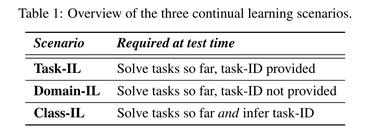Search Results for author: Marcin Mazur
Found 10 papers, 7 papers with code
HyperPlanes: Hypernetwork Approach to Rapid NeRF Adaptation
1 code implementation • 2 Feb 2024 • Paweł Batorski, Dawid Malarz, Marcin Przewięźlikowski, Marcin Mazur, Sławomir Tadeja, Przemysław Spurek
Neural radiance fields (NeRFs) are a widely accepted standard for synthesizing new 3D object views from a small number of base images.
Bounding Evidence and Estimating Log-Likelihood in VAE
no code implementations • 19 Jun 2022 • Łukasz Struski, Marcin Mazur, Paweł Batorski, Przemysław Spurek, Jacek Tabor
Many crucial problems in deep learning and statistics are caused by a variational gap, i. e., a difference between evidence and evidence lower bound (ELBO).
Target Layer Regularization for Continual Learning Using Cramer-Wold Generator
1 code implementation • 15 Nov 2021 • Marcin Mazur, Łukasz Pustelnik, Szymon Knop, Patryk Pagacz, Przemysław Spurek
We propose an effective regularization strategy (CW-TaLaR) for solving continual learning problems.
HyperCube: Implicit Field Representations of Voxelized 3D Models
1 code implementation • 12 Oct 2021 • Magdalena Proszewska, Marcin Mazur, Tomasz Trzciński, Przemysław Spurek
Recently introduced implicit field representations offer an effective way of generating 3D object shapes.
HyperPocket: Generative Point Cloud Completion
1 code implementation • 11 Feb 2021 • Przemysław Spurek, Artur Kasymov, Marcin Mazur, Diana Janik, Sławomir Tadeja, Łukasz Struski, Jacek Tabor, Tomasz Trzciński
In this work, we reformulate the problem of point cloud completion into an object hallucination task.
Modeling 3D Surface Manifolds with a Locally Conditioned Atlas
1 code implementation • 11 Feb 2021 • Przemysław Spurek, Sebastian Winczowski, Maciej Zięba, Tomasz Trzciński, Kacper Kania, Marcin Mazur
This way, we can sample a mesh quad on that sphere and project it back onto the object's manifold.
Generative models with kernel distance in data space
1 code implementation • 15 Sep 2020 • Szymon Knop, Marcin Mazur, Przemysław Spurek, Jacek Tabor, Igor Podolak
First, an autoencoder based architecture, using kernel measures, is built to model a manifold of data.
Gravilon: Applications of a New Gradient Descent Method to Machine Learning
no code implementations • 26 Aug 2020 • Chad Kelterborn, Marcin Mazur, Bogdan V. Petrenko
These methods modify the effect of the gradient in updating the values of the parameters.
Sliced generative models
no code implementations • 29 Jan 2019 • Szymon Knop, Marcin Mazur, Jacek Tabor, Igor Podolak, Przemysław Spurek
In this paper we discuss a class of AutoEncoder based generative models based on one dimensional sliced approach.
Cramer-Wold AutoEncoder
2 code implementations • ICLR 2019 • Szymon Knop, Jacek Tabor, Przemysław Spurek, Igor Podolak, Marcin Mazur, Stanisław Jastrzębski
The crucial new ingredient is the introduction of a new (Cramer-Wold) metric in the space of densities, which replaces the Wasserstein metric used in SWAE.


